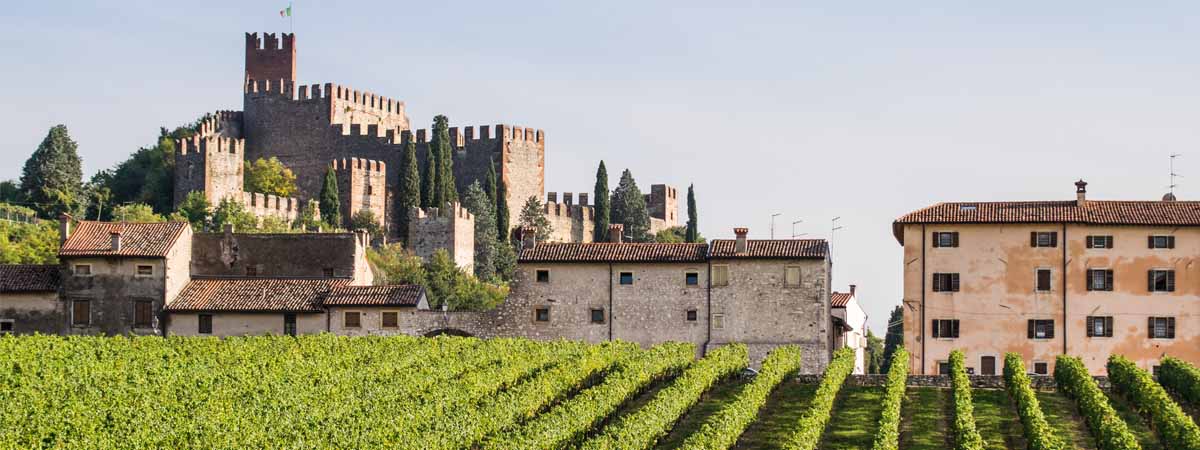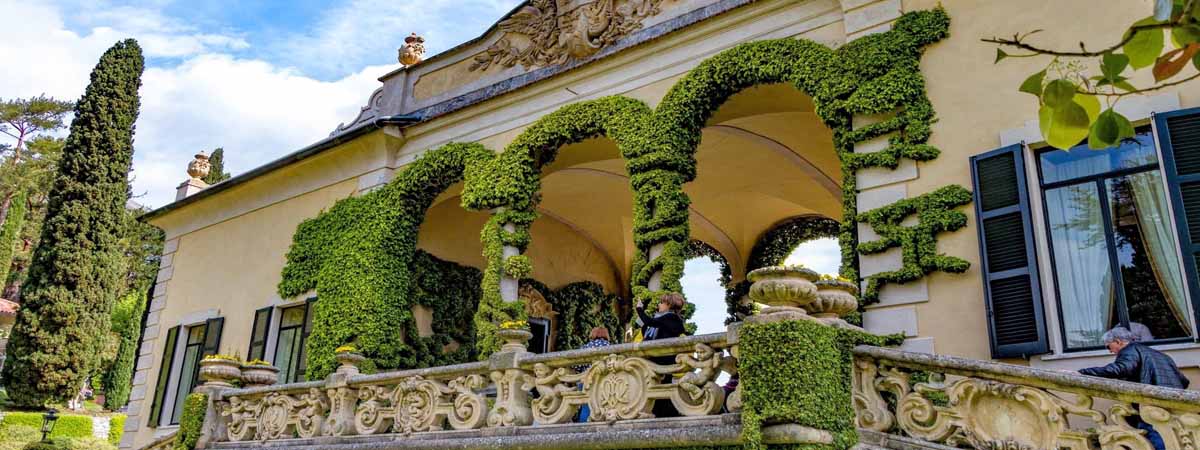Located in Veneto, widely renowned as one of Italy’s principal wine regions, Verona features a simple yet hearty cuisine. Rich and filling dishes of rice, polenta, beans, and a variety of meats pair perfectly with the area’s full-bodied wines. Local specialties derive from peasant traditions and feature typical products of surrounding areas such as fish from Lake Garda, cheese from Lessinia, and rice from the southern part of the province of Verona. From delicious appetizers to filling main courses to delectable desserts, traveling to Verona promises an adventure in food as well as culture.
APPETIZERS
Appetizers in the Veneto region include traditionally Italian dishes such as crostini topped with a variety of local ingredients and selections of local bread, cheeses, and cured meats like salame. One prized local cheese is Monte Veronese, which is made in the Lessini mountains. The cow’s milk cheese may be either fresh and with a sweet flavor or aged and with a more pungent flavor.
FIRST COURSE
For the first course, travelers can expect to enjoy filling pasta and rice dishes.
The pasta most unique to Verona is called bigoli, which is native to the Veneto region. This signature pasta is shaped like spaghetti, but is much thicker. Bigoli pasta is usually made with wheat flour and without eggs, though some variations may be made with buckwheat, or eggs may be added to the dough. One traditional way bigoli is served is with duck ragù and grated cheese. Another local preparation is called bigoli in salsa, which is made with onions and sardines or onions and anchovies.
Meat sauces for pasta dishes in Verona are unique, as they can sometimes be made with untraditional meats like duck, horse, or donkey. The meat is flavored with onions and spices and roasted to enhance the flavor. The juices from the roast are used as the base for the sauce.
Rice dishes are also prevalent during the first course in Verona. Rice is a common crop in Northern Italy and one variety produced only in the province of Verona is vialone nano veronese. This DOP variety is ideal for risotto, a very popular dish throughout the area. So much so that there is a yearly festival in Isola della Scala, a town approximately 13 miles from Verona. This Rice Fair, which usually occurs in September and October, features top Italian chefs who prepare a variety of risotto dishes, including local specialty risotto all’isolana (made with veal, pork loin, rosemary, cinnamon, and grated cheese).
Other popular risotto dishes include risotto al tastasal (made with ground pork seasoned with salt and pepper), risotto al radicchio (a very traditional dish made with local radicchio) and risotto all’Amarone (made with an intensely flavorful regional wine, Amarone della Valpolicella).
Other common rice dishes in Verona include risi e bisi (rice and peas), which contains more liquid than traditional risotto, yet is denser than a soup, and risi e figdini (rice and chicken livers).
Gnocchi are commonly enjoyed as a first course in the area as well. These potato dumplings are often served with tomato sauce and grated cheese, butter and sage, or stew meat.
Additionally, the province of Verona is home to a special type of tortellini from a town called Valeggio sul Mincio. Believed to have been created during the fourteenth century, these tortellini are made with flour and eggs and filled with a ground mixture of beef, pork, chicken, onions, carrots, celery, rosemary, Bardolino wine, and breadcrumbs. The tortellini are cooked in beef broth, then they may be served with the broth or with butter and sage.
SECOND COURSE
One of the most characteristic features of Verona’s cuisine are the unique meats present in the second course. The use of different meats such as veal, pork, wild game, beef, duck, and fowl helps distinguish the city’s second courses from other locales throughout Italy. From roasts to stews to sauces, meat is a highlight in all of Verona’s cuisine.
Among Verona’s traditional second courses, lesso e pearà is the most iconic and a must-try for anyone visiting the city. Invented in Verona, pearà is a slowly cooked sauce made from grated stale bread, beef bone marrow, beef and/or chicken broth, black pepper, olive oil, and salt. In some cases, Grana Padano cheese may be added, but this ingredient is optional. Traditionally, the sauce is served with different types of poached meats (lesso), such as beef tongue, chicken, or capon. A common side dish served with lesso e pearà is sauteed wild herbs. This second course dish is usually anticipated by a first course dish that also features the pearà sauce, such as broth, pasta or tortellini di Valeggio. Therefore, for the locals, making pearà does not refer to simply one dish, but preparing a complete meal.
Another classic meat sauce in the Veneto region is peverada, which is created from chicken livers, spices, and a generous amount of pepper. Depending on local traditions, sausage or cured meats may be added to the sauce as well as onions, sage, and juniper berries. This winter staple is usually added to roasted or braised chicken as well as pheasant or other wild game. In some cases, the sauce may also be used to prepare risotto dishes.
Stinco al forno, or roast veal shin bone, is a common second course dish. The meat is cooked low and slow, so it becomes extremely tender. It is served with polenta or potatoes.
Not for the unadventurous, bistecca di cavallo (horse steak) is a popular dish throughout the city. Horse meat is served in a variety of other ways as well, including sfilacci (dry, shredded horse meat, which is often served in salads, as an appetizer, or with pasta) and pastisada (a stew made with horse meat, onions, carrots, bay leaves, cinnamon, nutmeg, and Valpolicella wine and served with polenta). In the region of Veneto, eating horse meat goes back to the late fifth century when, after a massive battle, fallen horses provided ample meat for the people of the area to survive.
As with the rest of Northern Italy, many second course dishes in Verona are accompanied by polenta. Typical examples include luccio e polenta (pike and polenta), polenta e osei (quail wrapped in pancetta or lard cooked on a skewer and served with polenta), polenta infasola (polenta and beans), and polenta e renga (polenta and herring).
Though not as prevalent as meat dishes, seafood is present in the local cuisine thanks to nearby Lake Garda, which is Italy’s largest lake. Lake fish is often roasted, grilled, sauteed, or braised and served with polenta. A common dish throughout the Veneto region is sarde in saor, which features fried sardines marinated with onions in sweetened vinegar. Depending on the portion size, sarde in saor may also be served as an appetizer or a finger food. The latter preparation is quite common in Venice as part of the local cicchetti finger food tradition.
SIDE DISHES
As mentioned above, many dishes in Verona are served with a side of polenta. This traditional side dish can be prepared soft and creamy or left to cool and cut into cubes. Typically, when served in cubes or square slices it is grilled before serving. The most traditional variety served in the area is yellow polenta.
Just like in other parts of Italy, vegetables are a common component of side dishes in Verona as well. Local vegetables may be roasted or sauteed and served with meat or fish dishes. Common vegetables include asparagus (especially white asparagus from the city of Bassano del Grappa in northern Veneto), radicchio, and wild herbs.
STREET FOOD
One of the city’s most delicious street foods is crema fritta. Italian for “fried cream,” this dish is as indulgent and delicious as it sounds. It is made from thick custard cream that is breaded and deep fried to a crisp, golden brown. These delectable bites, often topped with powdered sugar, are served hot from the fryer in a paper cone – perfect for eating while strolling the city streets and piazze.
DESSERTS
Other more traditional sweets served in Verona include a variety of cakes, cookies, and other delights.
Pandoro is a Christmas dessert invented in Verona that is now enjoyed throughout Italy and the world. Meaning “golden bread,” this cake is made with a large quantity of egg yolks and baked into a star shape. It is served with powdered sugar on top and enjoyed throughout the Christmas season.
Historically, pandoro was served alongside nadalin, an older dessert more closely tied to Verona’s local culture. According to legend, nadalin was invented during the thirteenth century for the Scaglieri Family, which governed Verona at the time. Made with similar ingredients, nadalin is less buttery than pandoro, but sweeter and denser. Nadalin does not have a distinct shape like pandoro, but it can be made in the shape of a star or with a low dome. Since pandoro has gained national and international fame, nadalin has become the more popular Christmas treat among the Veronese.
Other commonly served desserts include sfogliatine (strips of glazed puff pastry), sfogliatine di Villafranca (doughnut-shaped puff pastries), Baci di Giulietta (small and round almond and hazelnut cookies joined together by a chocolate filling), torta russa di Verona (a thick cake made with puff pastry, almonds, amaretti, eggs, lemon, and covered with powdered sugar) and fritole (apple and lemon flavored fritters made for Carnevale).
WINE
The region of Veneto is one of Italy’s largest wine production areas. In fact, Veneto produces the most wine of any region in Italy. The province of Verona features 8 DOC zones that produce sparkling wine, whites, reds, and rosés. When in Verona, travelers are surrounded by rich winemaking history.
Some of the top local wine varieties in the province of Verona include whites such as Soave, Lugana, Custoza, and Monti Lessini Durello as well as reds like Bardolino, Valpolicella, Valdadige Terradeiforti Enatio, and Arcole Rosso.
Wine lovers can travel to Verona for fully immersive wine experiences such as the famous Vinitaly wine festival. Vinitaly is the country’s most important wine fair. Held annually, it features hundreds of winemakers and local wines. From winetasting to wine seminars and industry gatherings, the fair typically sees thousands of visitors every year.
In addition to tasting the wines in the city, Verona is a wonderful jumping off point for travelers to explore nearby wine areas, such as Valpolicella and Soave, in order to learn more about local wine production.
Verona’s distinct cuisine, featuring rice dishes, cheese, and a variety of meats, is a reflection of the local cultural traditions and the geography of the land. This culinary paradise is complemented by the province’s wines, including Soave, Bardolino, and Valpolicella, which are among the best in all of Italy.




Travel Guides
[wudrelated include="1837"]
The Veneto Region of Italy
[wudrelated include="2723"]
The Cities of Veneto, Italy
[wudrelated include="3793"]
